|
   |
|
Page 5 |
Newsletter 126 Autumn 2019 © Hampshire Mills Group |
|
Stari Mlini - deserted village in Montenegro
Ruth Andrews |
| |
|
Keith and I spent 10
days touring round Montenegro by car in June.
Before travelling we had done some research and
found information about a whole deserted village
with lots of mills, so of course we were determined
to find it. To quote one of the websites:
“The story of the Poseljani mills is remarkable. At
one time, there were 14 of them, operating day and
night. There were three gambling houses and three
coffee-houses where those who were waiting for their
corn to be ground spent their time. This could have
taken as long as seven days. The oldest mill is
said to be 300 years old. The mills stopped their
activity long ago, but 2 or 3 of the houses are
still occupied." |
|
The village of Poseljani is in a steep valley
leading into the northern end of Lake Skadar, which
is the largest freshwater lake in Southern Europe,
situated between Montenegro and Albania. Our hotel
owner had given us detailed instructions for finding
the start of the private road which is the only
practical access to the village, other than a 3 hour
boat trip.
The said road descends very steeply to the village
but we soon spotted the houses far below us through
the trees. We spent a pleasant half hour exploring
the dilapidated remains of the single storey
Norse-style mills before trudging back up the road
in the blazing sun and heat over 30oC:
20 minutes down, 35 minutes back up with lots of
pauses.
|
 |
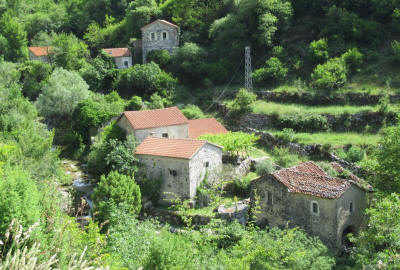 |
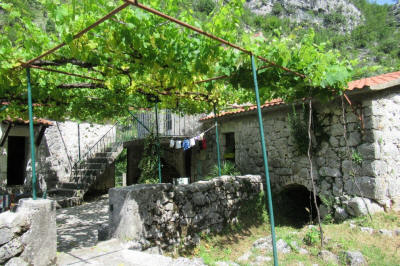 |
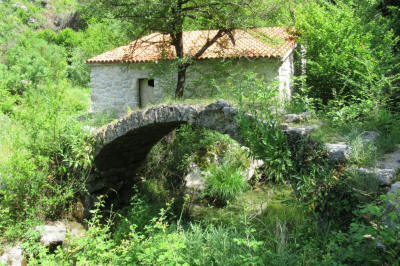 |
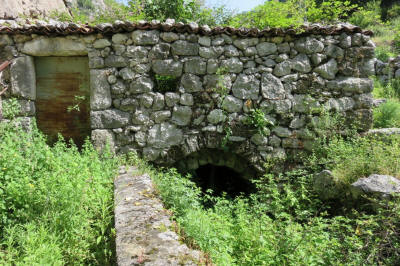 |
|
Several days later we were in the Durmitor National
Park where the done thing is an easy 3.5km walk
round Crno Jezero (Black Lake). By this time
we had bought a local map which marked some mills on
Mlinski Potok (Mill Stream) which drains into
the lake. At the Visitor Centre was a more detailed
map (right) with the mills marked, so we set
off to find them. |
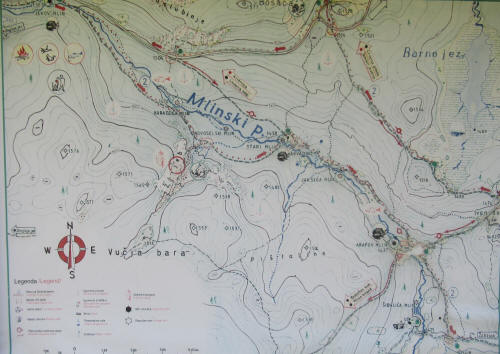 |
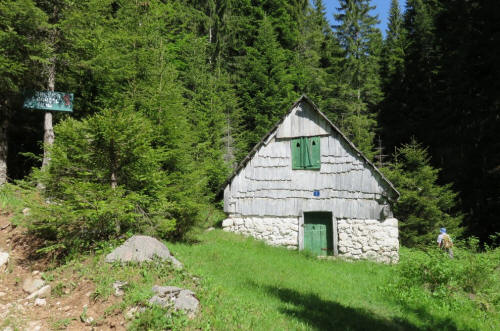 |
The first one, Jaksića, (left) was easy to find,
although inevitably it was locked. We could not see
any details of the water courses or what was inside.
Then things got harder: we passed several mill
sites of which
Ostaci Uskočkoc
(below left)
is typical, well-marked but underwhelming (right).
|
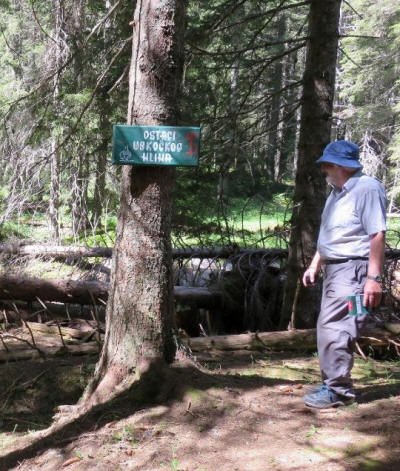 |
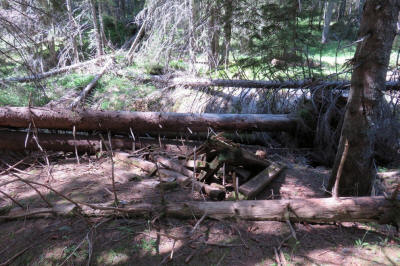
After a while we gave up and did the easy (!)
lakeside path instead. I will never complain about
tree roots and boulders ever again. Later in the
evening when we had recovered we drove back up to
the only working mill higher up the stream. |
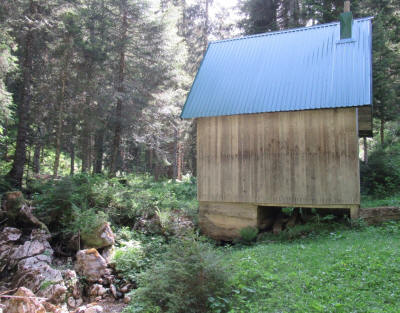
Zekov
mill, which appeared to be similar in type to
Jaksića,
was more interesting because the metal flume and its
associated wooden launder looked to be original. We
particularly liked the sluice control on the flume.
Again the building was locked, but by aiming my
camera up the outlet arch I was able to look inside.
|
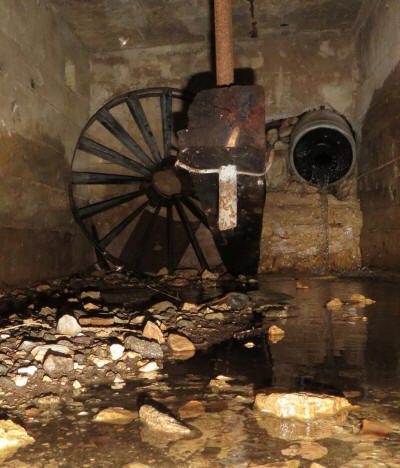 |
 |
I was surprised to see a vertical water-wheel but it
turned out to be a metal tirl – probably a modern
replacement – not attached to its shaft. Above you
can see
the circular end of the metal flume, the vertical
shaft, and the tirl safely stored against the far
wall |
|
By now we knew the words to look for were stari
(old) and mlin (mill). So the very well
advertised and smart restaurant Stari Mlin at
Ljuta was an obvious coffee stop. It was not
open but they were happy to let us look around and
take photographs. |
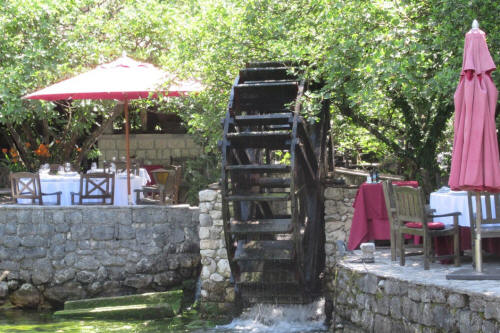 |
|
There were two large vertical wheels – very
atmospheric and probably authentic, but not in
original positions. A hopper and very confusing
horizontal wheel were on display amidst the dining
tables. The massive stone mill building appeared to
have 3 outlets for horizontal wheels, but we could
not work out whether the vertical wheels came from
the same building. The owners had also collected
quite a few traditional stone vats and jars for
storing olives.
And finally we did have coffee!
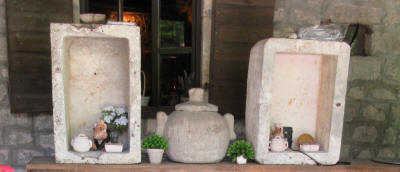
|
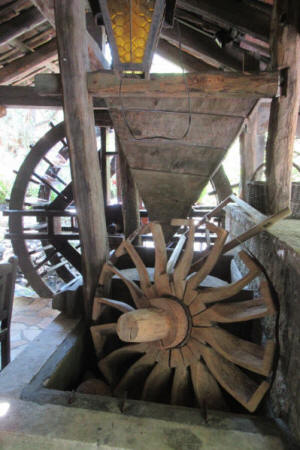 |
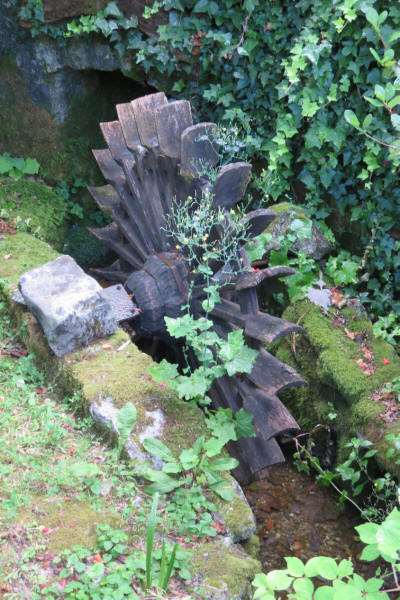
Inside the restaurant there were a pair of stones
and a hopper in a more credible position (right).
Keith asks if that is a curious form of tentering
gear housed in the flour ark. |
Catowice Mills near Konstanjica, our fourth
attempt, was also a restaurant, again with a
substantial building, unlike the small buildings
with a single wheel at Black Lake. We found a very
odd wheel mounted vertically in the tailrace (left);
it had paddles rather than spoons so perhaps it was
just a small undershot wheel.
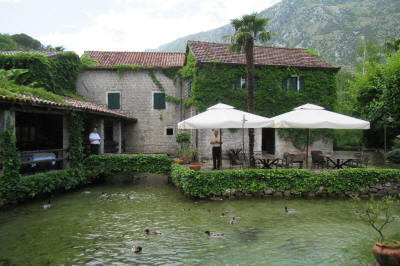
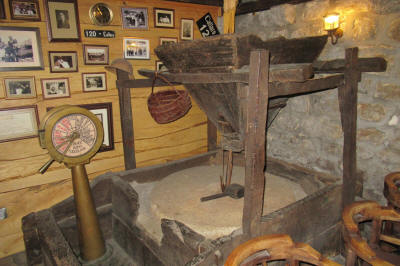
|
| |
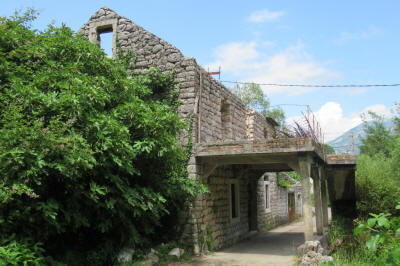
Across the valley we glanced inside a derelict
roadside building and were surprised to find a
crushing stone assembly (for olives?). You can see
the pit wheel to the left of the crusher.
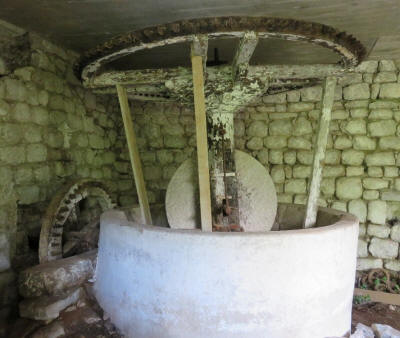
There are 3 straight modern supports to stop the
gear wheel and crushing stone collapsing. On the
other side of the wall was a wheel pit and the axle
of a vertical waterwheel; so yes, both types were
in use in Montenegro. In the other half of the
building there was also a press dated 1880 (right).
|
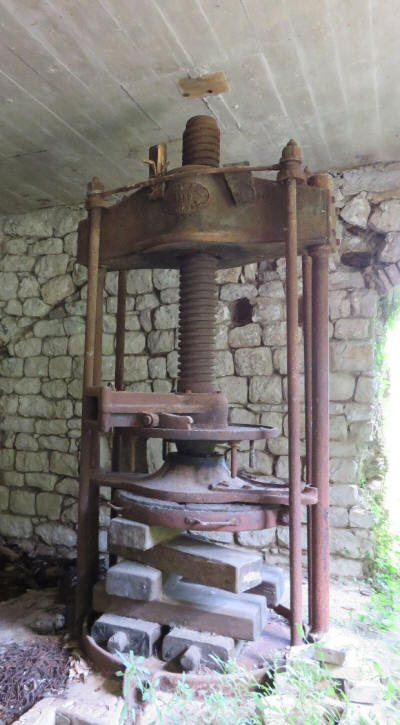
|
|
Our only other finds were limited to several
well-worn remains of the hubs of horizontal wheels
on display in restaurants, such as these in Kolašin.
They demonstrate that, because the spoons on
horizontal wheels do not have a very long life, they
need to be easily replaced and seem to be designed
to bolt on to the bottom of the drive shaft.
|
 |
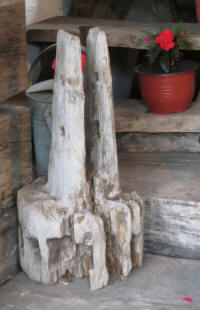 |
| |
|
|
   |
|
|
